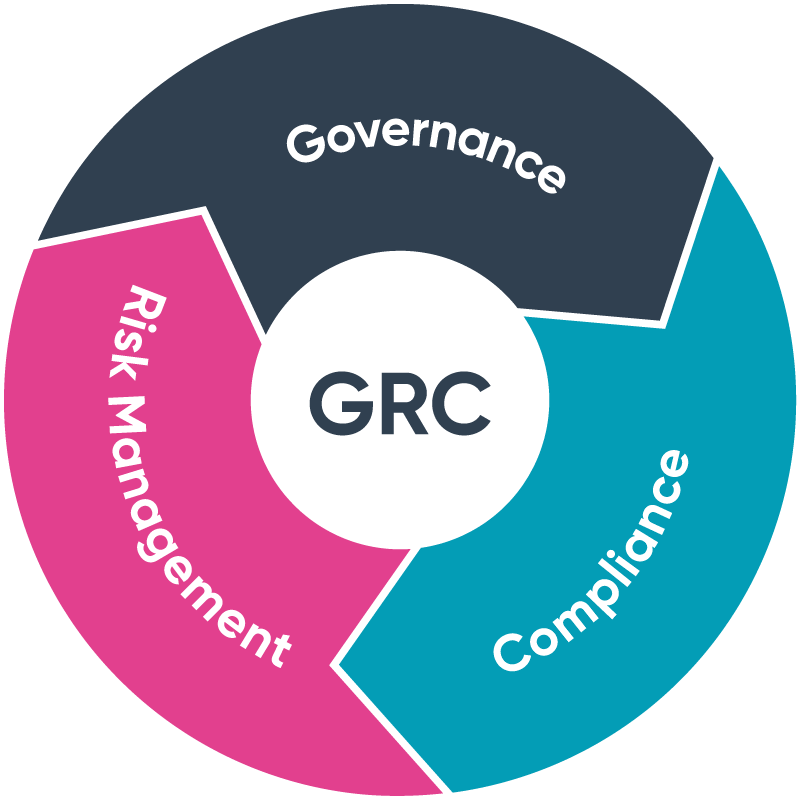GRC systems are used across industries like finance, healthcare, manufacturing, and IT to ensure policies are followed, risks are tracked, and compliance standards are met effectively.
GRC software means management of management, risk and compliance. This helps organizations manage risk, fulfill regulatory obligations and maintain moral board through integrated technology platforms. These units unite the guidelines, the audit, the risk assessment and the reporting of compliance - reduce the complexity of handling them manually. The GRC system is used in industries such as finance, health care, production and to ensure that the guidelines are followed, the risk is tracked and compliance standards are met effectively.

Why GRC software means something in today's business environment
With increasing regulatory requirements and global cyber security risk, companies are facing increasing pressure to remain obedient and risk -compliant.
GRC provides software:
Centralized control: Managing internal guidelines, control and risk frameworks in a platform
Real-time monitoring: track events, non-transport and risk risk they are
Better decision -making: Access to dashboards for notified strategic options
Audit Preparedness: Empower Evidence Collection, Audit Trails and Reporting
Relationship compliance: Stay up to date with changed rules in the courts
Organizations that use the GRC tools get better visibility, reduce the cost of non-compliance and coordinate business goals with regulatory obligations.
Newer Development in GRC software (2024–2025)
Modern GRC platforms are integrated with new technologies and adapt to dynamic regulatory environment.
Important trends include:
AI and automation: Use AI to identify patterns in platform audit data, suggest improvement of control and automate risk scoring.
Cloud-Country Solution: GRC tools now provide scalable breast models with external access and automatic updates.
Regulatory intelligence feeds: Real-time updates on compliance changes across countries and sectors
Regulatory Intelligence Feeds: Real -Time Updated Cyber Security Integration On Compliance Changes in Land and Regions: GRC is bound with risk and data security equipment for rapid integrated management.
ESG tracking properties: Many platforms now include the environment, social and management metrical reporting.
Legal and regulatory views
GRC platforms help organizations follow many global rules, including:
General Data Safety Regulation (GDPR) - EU regulation of personal data processing
Sarbanes -Oxley Act (Sox) -american Law requires financial control and audit accuracy
HIPAA - US data protection requirements
ISO/IEC 27001 - International Standards for Information on Information Security Risk
PCI-DSS payment Security standard for handling card holder data
Important compliance features:
Automated audit logs
Policy cskind tracking
- Risk heat map and reporting of dashboard
Workflow automation for event and continued resolution
Resource:
Compliance Week – Regulatory Compliance News & Analysis
Tools and GRC Software Providers to Know
Here are some widely used GRC platforms and helpful tools for implementation:
| Provider | Specialty | Website |
|---|---|---|
| LogicGate Risk Cloud | Scalable, no-code GRC workflows | logicgate.com |
| MetricStream | Cloud-based governance and compliance | metricstream.com |
| AuditBoard | Audit, risk, and SOX compliance | auditboard.com |
Useful GRC plan resource:
Coso Erm Framework - for Enterprise Risk Management
NIST risk management infrastructure - widely used in US government and IT sectors
GRC 20/20 Research - Insight, Maturity Model and Case Studies
Frequently asked questions
Is GRC software just for large companies?
No. Many GRC platforms provide modular and scalable solutions that are small for small size businesses. Cloud -based equipment often begins with basic functions such as policy tracking or risk registers and grows as the development of your needs.
Can GRC tools be adapted for industry-specific rules?
Yes. Platforms such as calculations or logicagate provide industry -specific templates for areas such as health care, banking, production and energy.
How to integrate GRC systems with other commercial devices?
Modern GRC solutions are often connected with cloud storage tools for ERP systems (eg SAP, Oracle), HR software and seamless data sharing and centralized risk visibility.
What is the difference between GRC and traditional match software?
Traditional match software is often focused on a single domain (eg hipaa). GRC software provides an integrated approach to management, corporate risk, IT security and compliance in a platform.
Does GRC equipment help with ESG reporting?
Yes. Many GRC platforms now support ESG risk monitoring, reporting and disclosure adaptation with frameworks such as GRI, SASB and TCFD.
Conclusion:
GRC software has evolved in an important part of business operations with GRC software, especially for organizations facing regulatory complexity, security risk or rapid growth. This simplifies compliance, promotes a culture of risk trait and ensures responsibility in teams. Choosing the right platform depends on your industry, the needs of compliance and the size of the company - but the final goal remains the same: to integrate management and risk practice for smart, secure decisions.
